My Book and its Art: The Rich, The Poor and The Naked
Why Does It Still Hurt? Book Site: The Rich, The Poor, and The NakedCall: 804-761-5766 for more info.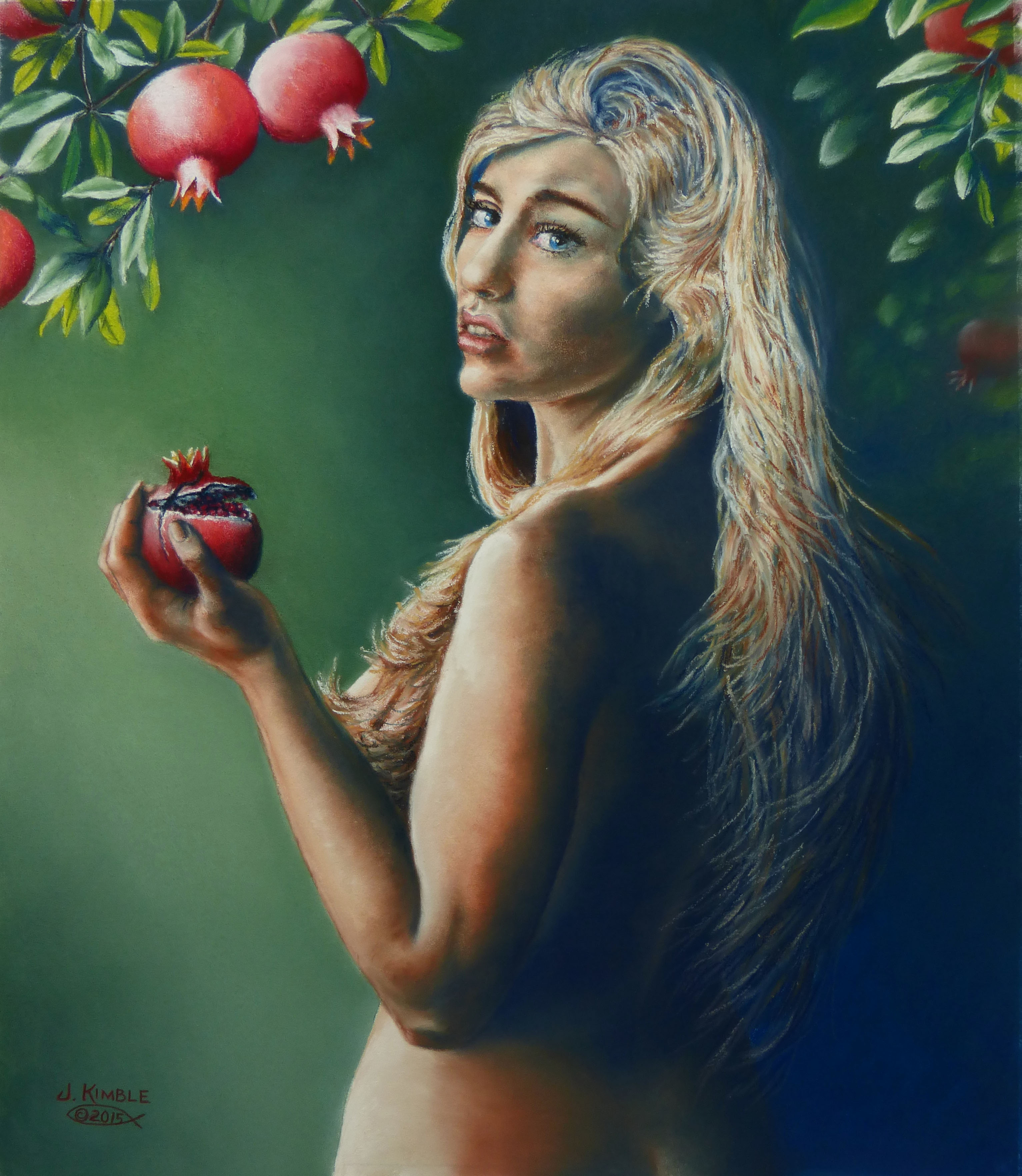
WOMEN’S STUDIES – DEFINING MOMENTS of ‘THE RICH, THE POOR and THE NAKED’
Romans 8:28 “And we know that all things work together for good to those who love God, to those who are the called according to His purpose.”
In the summer of 2012, I went through a particularly bad time of personal betrayal, pain and suffering; I wondered if I would be able to get through it. Over and over I relived the agony; sleep eluded me; I felt like I was an empty, walking, dead person. One night, unable to sleep and desperately ne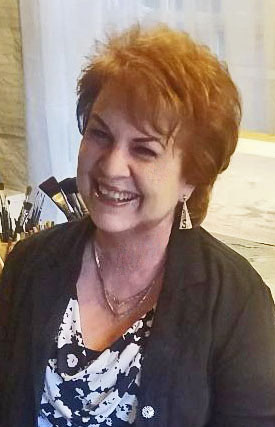 eding to, I crept out of bed and went to my meditation pond in the back yard. I sat there in the dark and prayed for strength, courage and a forgiving heart. After a while, I went back to the screened porch where we have some porch furniture, and I lay on the little couch there, still praying and crying until I had no tears left. I wanted so badly to sleep, but could not. My heart was broken–I was broken! As I lay there in the wee hours of the morning while it was still dark, God came to me. His presence was real and palpable, and I could feel Him cradling me in His loving arms. He said “Tonight, I will give you rest. In the morning, it will start all over again and the pain will still be there, but this night you will sleep.” I told Him there was no better way I could think of to fall asleep than by praising and talking to Him, and I went right to sleep. In the morning, I awoke, and sure enough the pain came crashing back, but way down deep inside, there was a joy I had never known before: the joy of knowing He was really, personally there, caring for ME, never leaving ME, helping ME… And the joy is still with me today! It changed my life.
eding to, I crept out of bed and went to my meditation pond in the back yard. I sat there in the dark and prayed for strength, courage and a forgiving heart. After a while, I went back to the screened porch where we have some porch furniture, and I lay on the little couch there, still praying and crying until I had no tears left. I wanted so badly to sleep, but could not. My heart was broken–I was broken! As I lay there in the wee hours of the morning while it was still dark, God came to me. His presence was real and palpable, and I could feel Him cradling me in His loving arms. He said “Tonight, I will give you rest. In the morning, it will start all over again and the pain will still be there, but this night you will sleep.” I told Him there was no better way I could think of to fall asleep than by praising and talking to Him, and I went right to sleep. In the morning, I awoke, and sure enough the pain came crashing back, but way down deep inside, there was a joy I had never known before: the joy of knowing He was really, personally there, caring for ME, never leaving ME, helping ME… And the joy is still with me today! It changed my life.
I could never paint it, but I believe that was my defining moment in my Christian walk, when I knew that I knew that God was much more than merely my insurance policy to Heaven, and that every decision I made after that moment would be a result of that realization. I have never been the same since then, thank goodness! As painful as it was to endure, I also knew I wouldn’t have reached that moment and that realization without that pain.
Over the following weeks as I grew stronger in my walk through this valley, I was once again praying in my garden one morning. For some reason, I got off track and began thinking about a friend of mine who had majored in “Women’s Studies” in college. I was randomly wondering what in the world could one do with a degree in Women’s Studies, unless one got a secondary degree and became a professor at some liberal university teaching it. I could show her some women’s studies: Eve; Esther, Rahab, Ruth; the Shunammite woman; Mary; the woman at the well; the woman with the issue of blood…the list went on until I had twelve. And then… a little voice inside my head said, “So paint them!” I stopped thinking about anything else at that point! Say WHAT?? I brushed it off as some light and fanciful imagination. I don’t paint people. And then, again, “So paint them!” Yes, that was God. There was no doubt this time.
I believe that became the first part of my calling: to paint these twelve women from the Bible, some well known and some nameless, at that very moment in their lives when they each knew the decision they had to make at that instant would forever define their destinies. These were mostly all women of courage and faith, who did what was right even if it had meant ridicule, rejection, or death, or who accepted, at the point of death, the miracle of saving faith and lived to tell others. I could barely contain my joy at having this project revealed to me. Finally, it seemed I had a purpose!
My biggest question remained: once I paint them, what do I do with them? I knew He would never give me this monumental project just to hang the completed paintings on my own walls. I should have known better than to question God’s directions. Undoubtedly, He would find the way to best use them AFTER I got them painted! He doesn’t always reveal everything at once, and I was 100% sure I’d never know the answer to that question if I didn’t do them.
And then, I shut the whole thing down! I argued with God for an entire year about why I couldn’t do this project, because I was entrenched in the belief that I couldn’t paint skin tones without them looking cadaverous. This was the very reason I had never painted humans since I got out of art school thirty plus years previously. It was not that I didn’t love painting the models in school. I simply had never learned the technique for painting vibrant, living skin tones. What few times I had tried, it was disastrous. I was a wildlife and scenery artist, period. I finally became so restless in my spirit that I had to do it. I eventually admitted that God would not give me a project such as this without the skills to do it well, for His glory!
From that time forward I began researching clothing and shoes, jewelry and other accessories of the times, cultures and customs, wells and water jugs, area topography, and so much more. I found models for the various women, photographing them in special lighting and costume. My husband Jim wired new ceiling lighting in my studio area so I could better see what I would be painting. I bought all the pastels and papers I needed, and researched area framers. My goal was to be as accurate as possible for each individual woman. As a wildlife artist used to researching every detail about my subjects and their habitats, I discovered that this was the wildest wild life I had ever researched! Some of these ladies were pretty tough cookies living in very depraved and immoral societies!
Once I got a few of the paintings completed, it struck me, and was confirmed by others, that I should write a book about the twelve and put my paintings, writing, and poetry all into a book. Now, I had always wanted to write a book since my high school years. I loved writing prose and poetry both, but never knew what to write about. From my teens to later adulthood, ideas have ranged from romantic novels, to my autobiography, to a volume of poetry. As I matured and began my walk with God, I wanted to write something that had meaning, that could help others going through similar circumstances I have weathered. I wanted to create something that mattered, and would inspire hope and healing through difficult times. That’s God’s message, that there’s always hope no matter how dire the circumstances, and redemption no matter how wretched the lifestyle. These women all lived it. I am still living it! And so, the book “WOMEN’S STUDIES — Defining Moments” was born.

'EVE'
EVE – The First Woman, created by God out of Adam’s rib, was ready to spring into action because she was already an adult. As recorded in Genesis chapter 2, verses 18-25, and chapter 3, verses 1 – 24, she and Adam had the perfect, idyllic life, with everything provided in easy reach in the Garden of Eden. But Eve wanted more. The serpent had convinced her she wouldn’t die if she ate that good-looking fruit on the forbidden Tree of Knowledge of Good and Evil. Instead, she would then be wise, as wise as God Himself. Who wouldn’t want that, she thought. When she saw that it was so tempting in so many ways, she chose to believe the serpent. She ate one of the fruits from the forbidden tree, and coaxed Adam to eat one also. That first bite was the defining moment not only for Eve, but for all mankind until the end of time.

THE WOMAN AT THE WALL
THE WOMAN AT THE WELL – Her story can be found in the New Testament book of John chapter 4, verses 5-42. She was a woman of Samaria, nameless in the Bible, and with a rather checkered past. Because of that, she avoided going out to the point of drawing her water at the height of midday heat rather than the cooler morning or evening hours when other women did so. This way, she did not have to be subject to their scrutiny or criticism. Jews did not associate with Samaritans in any way, so she was shocked when she found a Jewish man at the well at midday, and that he spoke to her. During her conversation with Him, she became convinced He was the Christ. This was her defining moment. What she learned from Him was so amazing that she forgot all about keeping a low profile in the community. She left her water pot and boldly made her way into the city to tell everyone what had happened to her and whom she had met at the well.
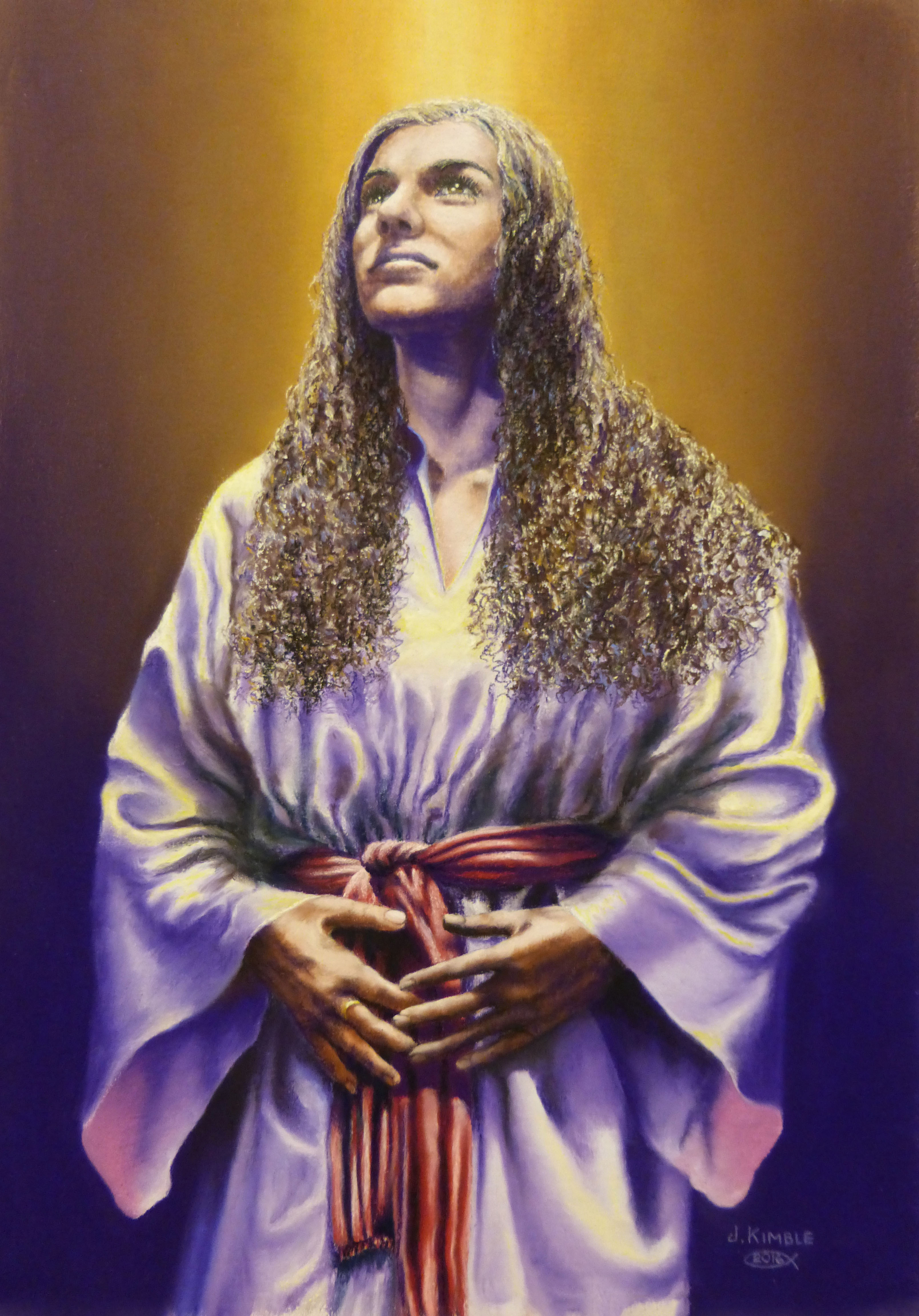
MARY, MOTHER OF JESUS
MARY, MOTHER OF JESUS
MARY – Mary’s story is one of incredible bravery. She faced almost certain death by stoning if she were found to be pregnant before marriage, much more so by someone other than her fiancée. If she, by some miracle, got off the hook without being stoned, she and perhaps even her family would’ve been ostracized from her community because of her sin of adultery. Or maybe her family would have also disowned her for the dishonor she would have brought on their family. The story of her defining moment is told in Matthew 1: 18-25, Luke 1: 26-38, and continued in Luke 2: 1-7. Mary was a very upright young woman, and as the angel Gabriel announced, highly favored by God. He came to her one night to tell her of God’s plan for her to bear the Son of the Highest. At first she was scared to death at this intrusion into her home by a stranger, but she quickly realized this was no ordinary visitor. She couldn’t figure out how she could have a baby without being married and consummating her marriage with her husband, so she asked the stranger. He told her the Holy Spirit would come upon her, the power of the Highest would overshadow her, and her baby would be the Son of God. Wow! That’s a lot to take in! Did she hesitate? She could have refused out of fear of humiliation or death or both. She could have argued with God, as Sarah did. But she did not. She simply said, in complete submission, “Behold the maidservant of the Lord! Let it be to me according to your word.” She is the most honored woman, the mother of the Lamb of God, our Lord and Savior Jesus Christ.

SARAH
SARAH
SARAH – Sarah’s story unfolds in Genesis 11:27 and spans all the way to the end of chapter 23. She had a long, active, adventurous life. She seemed always to buck the system, and she had a flawed personality which caused her many troubles along the way. Chief among those flaws was a lack of faith that God would keep his word for her that she would bear a son, who would produce the heirs to a great nation. Throughout her long story, there doesn’t seem to be a real, “gotcha” kind of defining moment. I have depicted what I think may have been her defining moment from Genesis 18; 9-15 when God spoke to her concerning this, as she eavesdropped on a conversation between Him and her husband, Abraham. She hid behind the flap of the door to her tent while God was outside talking to Abraham, telling him Sarah would be the mother of kings and nations. She laughed silently to herself in unbelief, but He knew exactly what she was thinking and told her so. When she argued, with Him, He called her out on that also. Well, after that, there could be no doubt! How could there be, when there was no way possible for a mere man to know what she was thinking to herself behind the tent flap? A year later, at the age of 90, Sarah delivered her very own baby after being childless her whole life! She bore Isaac, the son who would be the progenitor of the Hebrew race. Did her story end there? No. But she was rewarded with a child who took away her shame of barrenness, and she lived for another thirty-seven years, knowing her son Isaac was the ancestor-to-be of a people as numerous as the sands of the seas.
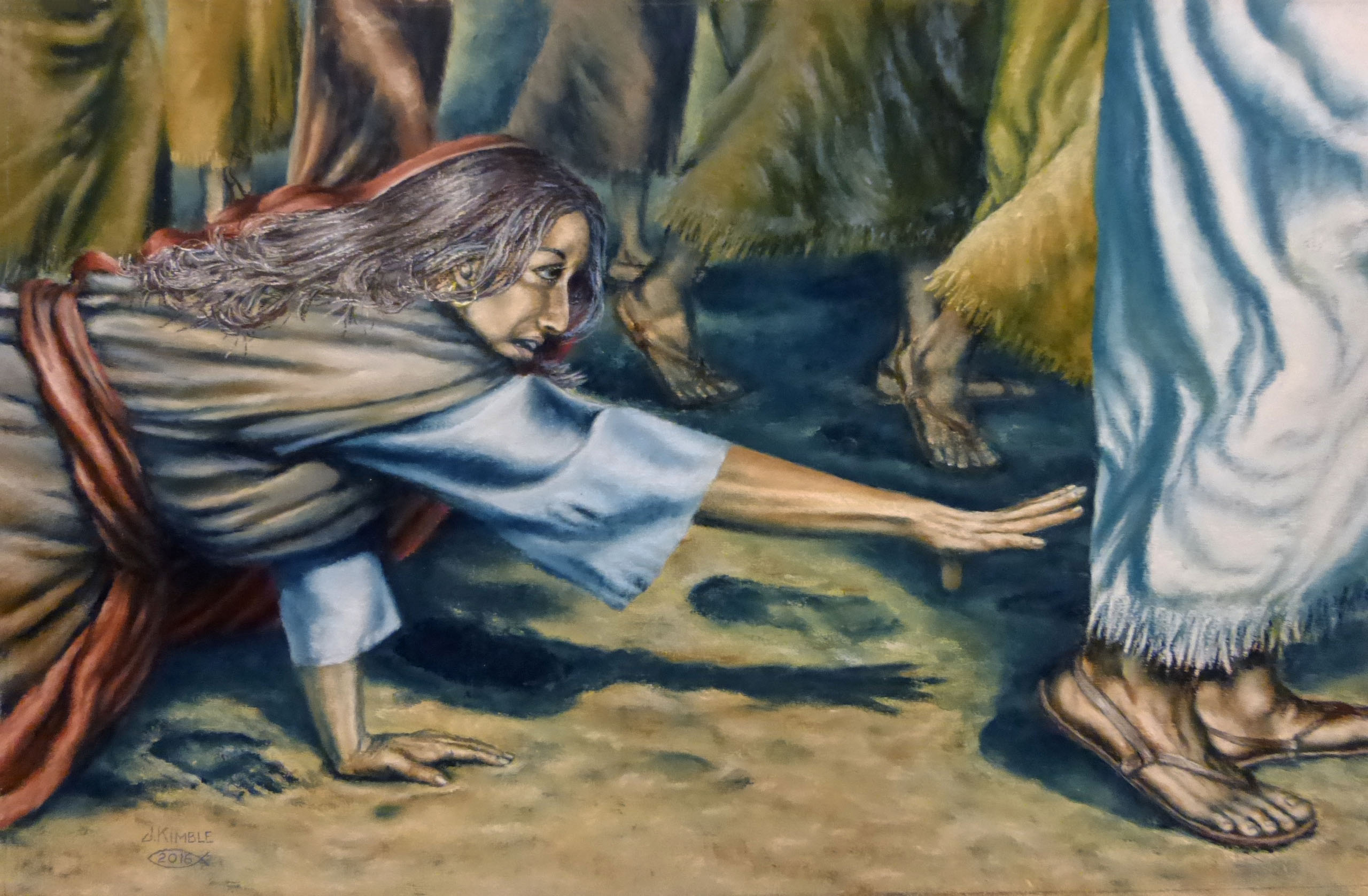
WOMAN WITH ISSUE OF BLOOD
THE WOMAN WITH AN ISSUE OF BLOOD
THE WOMAN WITH THE ISSUE OF BLOOD – This woman’s story is found in the New Testament book of Mark 5: 21-38. She had been ill for twelve long years with an issue of blood. She had tried everything, and had suffered much with physicians, and had finally spent all on her money on “cures” which seemed to make her worse instead of better. In Jewish culture, when a woman was bleeding, she was considered “unclean” until the bleeding stopped and she had gone through a purification process. No one could touch her until she was purified, or they would become unclean as well. She was, no doubt, ostracized by her family and all in her community for this ailment. She had heard of a new physician who seemed able to heal people. He actually seemed credible, and He had just landed by boat at the water’s edge of her town. He was thronged by crowds of people seeking healing, or who wanted to see His miracles. A Jewish ruler was there seeking healing for his young daughter who lay dying. The woman realized he was much more important than she, so she didn’t want to bother Jesus, for that was who the physician was. She figured if she could just touch the hem of His garment, that would be enough to heal her, and that became her defining moment. In her mind, Jesus could continue His work with others and never have to spend a moment on her. Accordingly, she fought her way through the crowd and touched His garment from behind. Immediately, she felt the issue of blood flowing within her dry up. But Jesus, who had felt power flow out from Him at her touch, turned to see who it was. Finding her and hearing her story, He told her she was healed from her affliction because of her faith in Him, and to go on her way in health. He was still speaking to her when a servant came up to the Jewish ruler with the news that his daughter had died and it was too late for help. Jesus said to Jairus, the daughter’s father, “Don’t be afraid. Only believe,” and He went on to bring the young girl back to life.

THE WOMAN CAUGHT IN ADULTERY
THE WOMAN CAUGHT IN ADULTERY
THE WOMAN CAUGHT IN ADULTERY – This notorious woman’s story is found in the book of John, chapter 8: 3-11. As Jesus was teaching in the temple in Jerusalem, the scribes and Pharisees dragged before Him a woman caught “in the very act” of adultery. They wanted to stone her to death, as the Old Testament law demanded for such a sin. But first, they wanted to ask Jesus about it to see if they could trip Him up on an answer that could incriminate Him as well. Jesus’ answer is the classic “Let him who is without sin among you cast the first stone.” Convicted by their conscience, one by one, they dropped their stones and wandered off. This wretched woman, probably terrified, who was expecting to die a humiliating and horrifying death at any moment, was suddenly given a reprieve. When all had departed, He asked if there was no one left to condemn her, then assured her that He did not condemn her either. He then exhorted her to go and sin no more. This woman, doomed to die, was given a new lease on life!
10 Comments
Submit a Comment
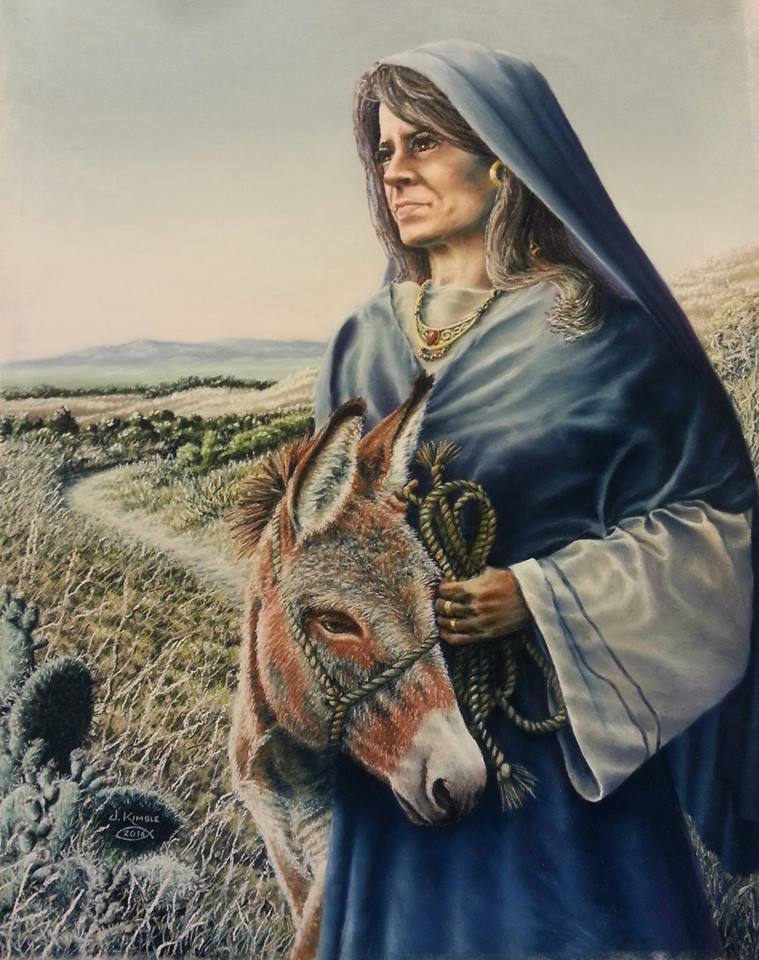
THE SHUNAMMITE WOMAN
THE SHUNAMMITE WOMAN – This notable, unnamed woman lived in the town of Shunem. Her story is told in 2 Kings, chapter 4: 8-37 and continued in chapter 8: 1-6. She and her husband were people of means, but were childless. She was a hospitable woman, however, and convinced her husband to build and furnish a room and meals for God’s prophet Elisha, whenever he passed by. In return for their generous hospitality, Elisha promised a son to her at the appointed time in the next year. The child was born and grew. A few years later, when her son sickened and died suddenly, she sent for a donkey and a servant that she might ride to Elisha and have him make the situation right. This is her defining moment. She is remembered for her unfailing faith, even in the face of death, that God would not give a gift only to snatch it away. When Elisha returned to Shunem with her, he brought the boy back to life. Her great faith in God through His instrument on earth, Elisha, was rewarded again years later, after a seven year famine. Elisha had warned her to move her family wherever they could find food. After a seven year absence, when she returned, her lands and former house were restored to her and her son by the king, along with all retroactive proceeds from the land for the seven years she had been gone.
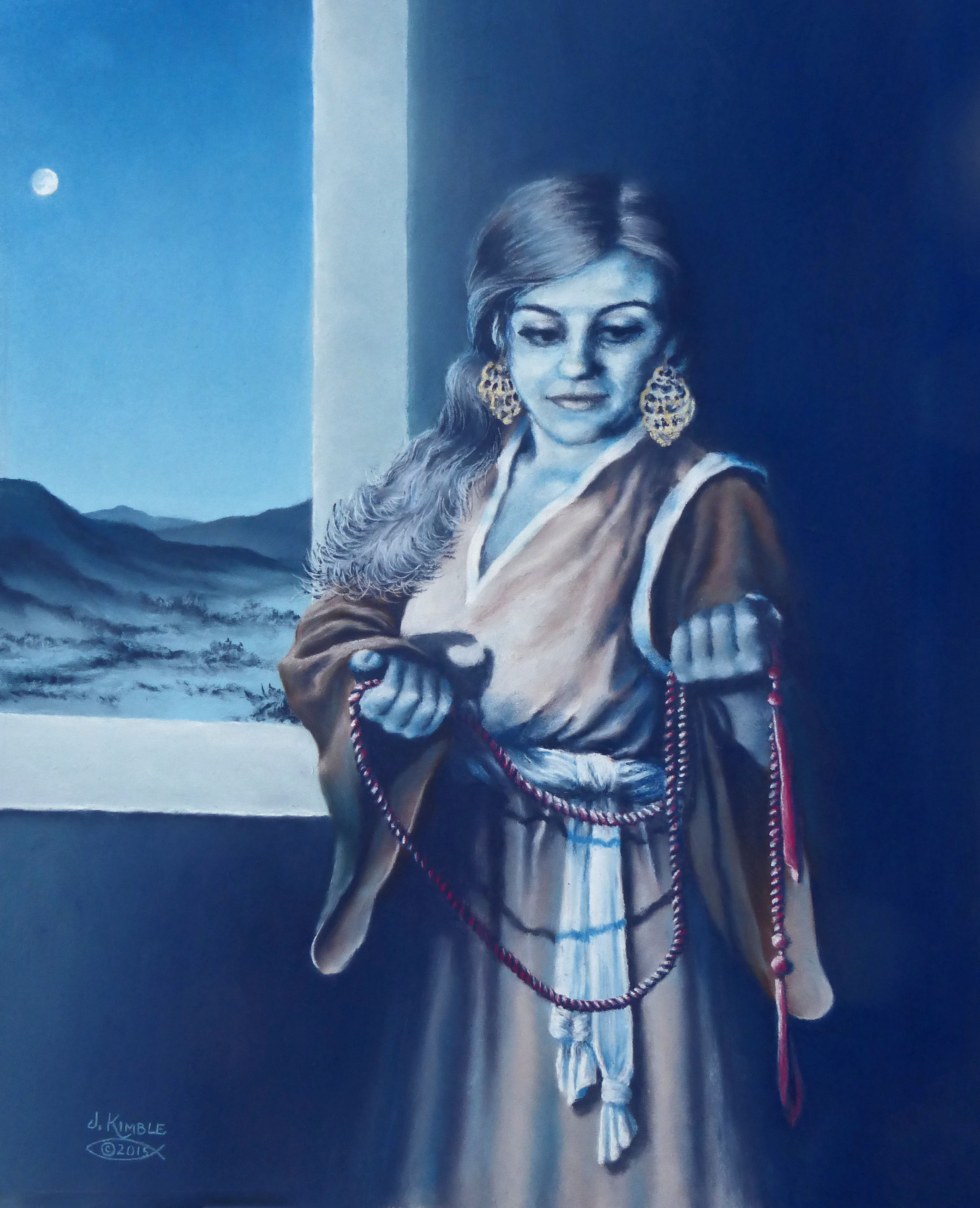
RAHAB
RAHAB – Rahab’s story occurs in the Old Testament Book of Joshua, chapter 2, verses 1-24, and continues in chapter 7, verses 22-25. Rahab was a young prostitute in the city of Jericho. She and her entire city had heard of the fierceness of the Hebrew army which was conquering all the land promised to them by God. When two spies showed up at her door, she knew exactly who they were. She decided to cooperate with them because she realized none of her gods could save her or her city, but that the one true God was with the Hebrews. It was a life or death decision for her, because she also knew her king had spies everywhere, and if she was found out, she would be killed. That momentous decision was her defining moment. Later in the Bible, it is recorded that Rahab not only survived, but ended up marrying one of the young spies she had sheltered, and became the great-grandmother of King David!
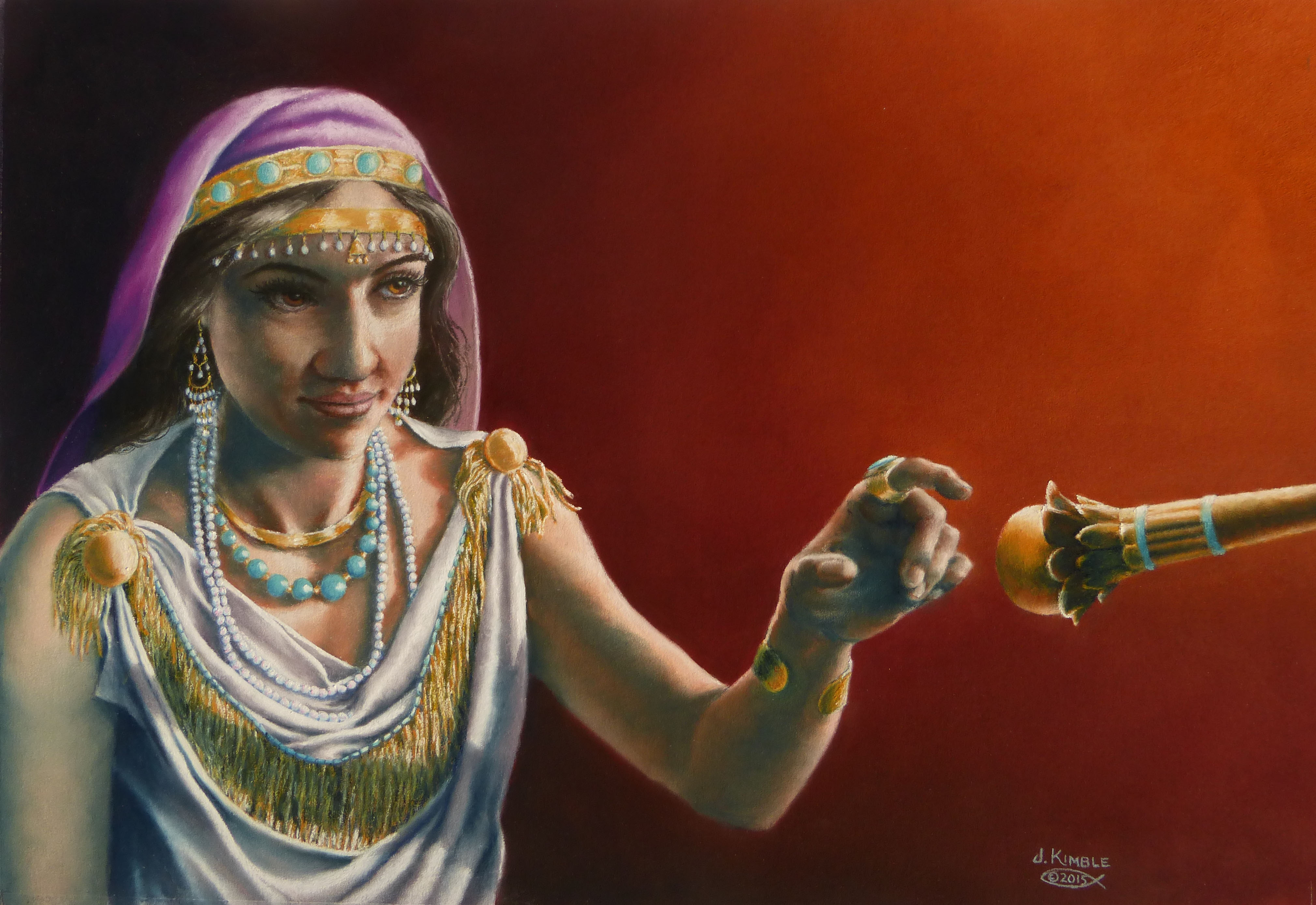
ESTHER
ESTHER
ESTHER – Esther has her very own book in the Old Testament of our Bible. Two generations previously, her forebears had been dragged off in captivity to Persia. She was orphaned at a young age, and adopted by her cousin Mordecai, who brought her up as his own daughter. They were part of the Jewish minority still living in Persia. Esther was extremely beautiful, but lived in obscurity. When the king threw a lavish party for all his generals and noblemen prior to a battle campaign coming up, and summoned his comely wife Vashti, to show her off to all his male guests, she refused to come. She was, after all, hosting her own party for the women. That notwithstanding, she was deposed as queen, and plans were made to implement a “beauty contest” among all the gorgeous virginal girls of the vast kingdom. The king would decide whom he liked the best, and that lucky lady would become the next queen. A few years later, after the battle campaign was completed, these plans were put into place, and Esther was chosen to become one of the “contestants”. When it was her turn to come before the king, he was so impressed that he chose her. Consequently, she was crowned the new queen. But there was evil afoot in the king’s court. His second-in-command, Haman, was full of jealousy and hate. He plotted to destroy all the Jews in the land. No one knew Esther was Jewish, but that included her, too. She risked her life to appear in the king’s court for an audience without being summoned. If he chose not to extend his scepter to her, she would be killed. Luckily for her, in her defining moment, he did. From that point on, all sorts of machinations took place as Haman plotted, and Esther counter-plotted. The story has more twists and turns as any good mystery thriller! Esther handily overcame the evil, pathetic Hamman, exposing him for the low-life he was. King Xerxes meted out justice, the Jews were allowed to live, and Esther, through her incredible courage and faith in God, saved the entire Jewish race from slaughter.
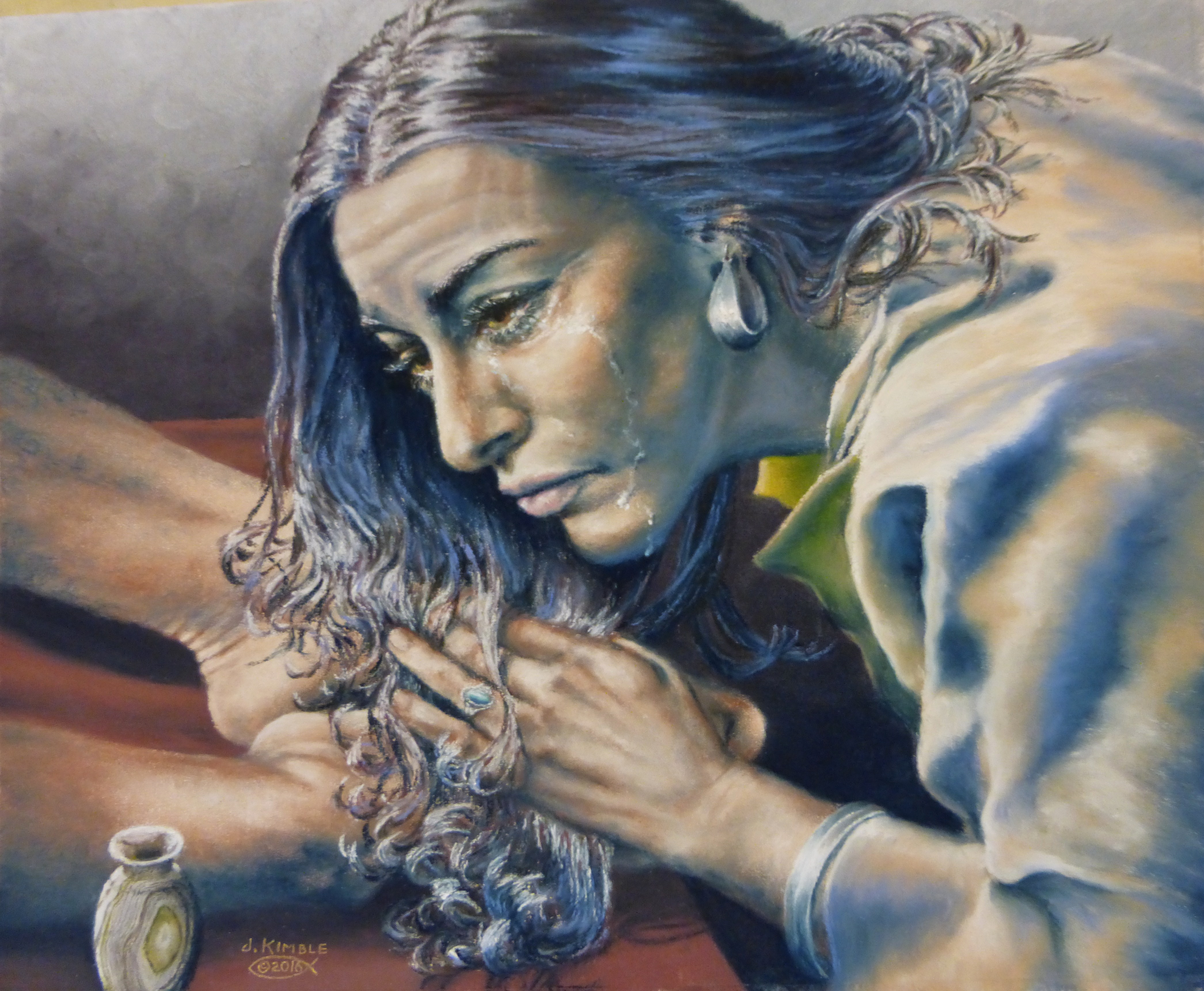
THE WOMAN WHO ANOINTED JESUS
THE WOMAN WHO ANOINTED JESUS
THE WOMAN WHO ANOINTED JESUS – This nameless woman’s defining moment is mentioned in the bible in all four books of the gospel accounts. First in Matthew 26: 6-13, second in Mark 14: 3-9, third in Luke 7:36-50, and finally in John 12: 1-8. All account differ to some degree. Some scholars believe that they may have been different accounts of similar circumstances, but all accounts have several things in common. The woman had discerned that Jesus’ time on earth was very limited. She felt compelled to honor Him in life for His impending death and burial. He was at a dinner party. She took her most precious possession, an alabaster flask of very expensive perfumed oil, came uninvited into the dinner gathering and anointed Him with it, weeping, washing His feet with her tears and wiping them with her beautiful, long hair. The other guests were outraged at this woman crashing their party and such waste of precious oil, which could have been sold, with the money given to the poor. But Jesus knew her heart. He accepted her offering, and as a reward for her great love to honor Him in life before His death, He pronounced that as long as the gospel story is told, her story would be told as well, as a remembrance to her for her great love. And so it is that her story is mentioned in one form or another in all four books of the gospels.

RUTH
RUTH
RUTH – Ruth like Esther, has her very own book in the Bible. Ruth lived in a very dark, turbulent period of time before there were kings in Israel. Law and justice were administered through a series of judges, and there was much strife and confusion after their principal leader, Joshua, had died. During this time, a man, Elimelech, his wife Naomi, and their two sons, left Bethlehem and journeyed to Moab to wait out a famine in their own land. While there, Elimelech died. The two sons married Moabite girls, Orpa and Ruth, and lived on in Moab for another ten years. The sons also died, leaving all three women widows. Naomi had heard the famine was over in Israel. She decided to return, whereupon her daughters-in-law wanted to go with her. Naomi entreated them not to come, but remain in their own land where they would find husbands among their own people, have children and a future. Orpa did return, but Ruth would have none of it. She knew Naomi needed someone to look after her, and she loved her mother-in-law. Her declaration of loyalty and faithfulness to Naomi is renowned. The two of them journeyed on to Bethlehem. Once there, Ruth set out to find work gleaning in fields, since it was barley harvest time. She gained permission to glean in the fields of one Boaz, who happened to be a kinsman of Naomi’s late husband, and who happened also to be an eligible bachelor. She worked hard, never slacked, and gleaned enough over time to be able to take care of herself and Naomi. Boaz also helped her along by leaving extra grain where she was gleaning, and making sure she ate with the rest of his crew. He also provided protection for her, since she was a lone woman out working in the fields. He clearly had taken a liking to her, so Naomi gave Ruth a set of instructions for how to ask Boaz for the redemption of her late father-in-law’s lands and possessions, which also included her. Boaz went through the proper channels of other relatives, and finding no takers, he redeemed all of Elimelech’s lands and possessions, including Ruth, whom he also married. She presented him with a son, whom they named Obed. Obed grew up and fathered Jesse, who fathered David, who became the King of all Israel. Naomi, who had been bitter and sad over losing her husband and both her sons, felt redeemed by God for having her late husband’s lineage continued through Ruth and Boaz. The family name would not be snuffed out! Her honor was restored. Ruth, who was a pagan, had declared loyalty to Naomi’s God as well as Naomi herself, thereby making her redeemed by God as well. She and Boaz became the great-grandparents of King David, cementing themselves into the lineage of Christ.

Pharaoh's Daughter
Pharaoh’s Daughter
PHARAOH’S DAUGHTER – It is not known definitively who she was, but many scholars believe she was Hatshepsut, daughter of Thutmose I. Her time table closely aligns with Moses’ time. She lived in the upper region of the Nile River valley near the present day border of Sudan, and was buried in the ancient Valley of the Kings. During the terrible period of Hebrew infanticide carried out by her father, she found a baby in a basket set adrift in the river by Hebrew parents trying to save their infant son. Overcome with compassion, she decided to save this child and raise him as her own son, since she had no son. But someone had to nurse that child, and since the baby’s sister was hiding nearby, she fetched the child’s mother, who nursed him, and then gave him up to Pharaoh’s daughter when he was weaned. Sad, but much better than death! Moses, so named because she (Hatshepsut) “drew him out of the water,” grew up to become the leader of his enslaved people, bringing them out of Egypt after a four hundred year captivity. There are hints that she might have converted to Judaism during her contact with Moses’ family, but that is unknown with any certainty, just as her identity is. She (Hatshepsut) is famous in her own right as an Egyptian queen and then Pharaoh, but her defining moment was saving a helpless infant floating along in the river, where she had gone to bathe. By so doing, she saved the Hebrew race and changed the history of the world.

Excellent post, keep up good work
How in the world did I miss this? Thank you so much for your interest and your comment!
The women are amazing –
Donna, thank you so much! I’m very late seeing these, so I apologize!
Beautiful work. You captured the essence of their heart
Donna, I appreciate this comment especially! I really tried hard to capture that moment when they each knew that they knew something had changed…
Touched. Thank you for sharing your gift, Jean.
This is incredible! Sent you an email!
Глибоко розумію всіх, хто задовбався через щоденного виснажливого пошуку якісних страви! До цього мені доводилося зберігати масу збережених сторінок у браузері – одні сайти для печива, інші для м’ясних делікатесів рецептів, треті для вегетаріанських рецептів. Часто плутала серед цього безладді! Однак після того, як випадково натрапила на цей чудовий каталог, моє кухонне життє поліпшилося! На сьогодні мені доступний усе в єдиному порталі – від елементарних варіантів на кожен день і закінчуючи святкових страв. Найбільше люблю той факт, як кожен джерела апробаційні досвідом і мають зрозумілі , зрозумілі для новачків рекомендації. Навіть не говорючи про те, що, зараз готую набагато оперативніше – немає необхідності витрачати марно цілий день на пошуки
Каталог сайтів
Довгий час була впевнена, що відмінно вмію готувати, але в останні місяці мої страви стали скучними і втратили різноманітність. Дівчина запропонувала мені подивитися оригінальні рецепти, але я не знала, де шукати. Випадково в інтернеті знайшла цей каталог і… це було наче знахідка скарбу! Оказалося, що є безліч сайтів з неймовірними рецептами, про які я навіть не підозрювала. Я була в захваті від підбірки з фірмовими стравами та рецептами етнічних страв. Протягом місяця я освоїла страву італійської кухні, в’єтнамської та ще й грецької кухні! Моя сім’я дуже задоволені, а я почуваюсь повноцінним кулінаром. Також почала вести щоденник, де фіксую цілі кулінарні відкриття, які освоїла
Каталог